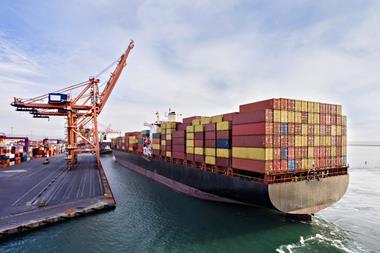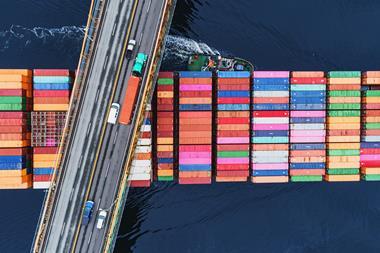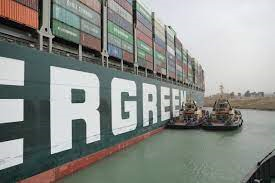Like recessions, supply chain disruptions are inevitable. We may be unable to prevent them, be we can lessen their duration
I recently received an email about how business leaders are preparing for a recession and that “forecasters say supply chain challenges driving inflation are currently driving the economic decline.”
The sender then went on to say that according to the US Federal Reserve, “fixing global supply disruption is key to avoiding a recession.”
For some, the supply chain and recession references in one sentence are surprising and revelatory. After all, isn’t procurement, sourcing, and everything that goes into a supply chain simply a functional exercise in buying goods and services at the best price?
Maybe those – especially outside of our profession, including the general public, think this way because they have come to take the ready availability of needed goods and services for granted.
Let’s face it, although our global supply chains have been stretched and proven vulnerable at times, how many of us have genuinely experienced first-hand shortages on such a grand scale before the pandemic?
Do you remember the OPEC crisis of the 1970s, waiting in long lines at the pump because of a gas shortage?
The Great Awakening
Of course, being aware of supply chain issues and actually understanding how they arise is an essential starting point towards fixing the problem – and by the way, there is no easy fix.
An April 2022 article in The Hill talks about what I call the bi-directional supply chain imbalance in which the tension balance within both “demand-pull” and “cost-push” is out of whack. The result of this “imbalance” is leading to the inflationary expectations fueling the current crisis.
So, what do I mean by demand-pull and cost-push?
As the name suggests, when there is a demand-pull, the aggregate demand exceeds or significantly outweighs the aggregate supply. The resulting “shortfall” results in price increases.
Conversely, with the cost-push effect, the decrease in aggregate supply brought about by factors such as natural disasters or geopolitical instability also increases prices.
In short, the former’s increases in “demand” that overtax the supply-side ability to produce the required products results in inflation. With the latter, the resulting increases in “costs” such as labor or raw materials drive the resulting inflation.
Regardless of whether price increases are due to a demand-pull or a cost-push – both of which we have experienced over the past two years, how do you curb inflation? When and how much do you apply the brakes by raising interest rates without triggering a recession?
From this standpoint, I am of a similar mind to The Hill article author Willy Shih when he says he is glad he doesn’t have “Fed Chairman Jerome Powell’s job.”
However, and for the purposes of this article, what does this all mean from a supply chain standpoint? And if procurement professionals act, can we circumvent an economic downfall?
Proactive and reactive resilience
Did the disruption in our supply chains caused by the demand-pull and cost-push lead to inflation, necessitating an interest rate hike that will facilitate a recession?
I am sure we could debate this question for hours without coming to a clear consensus. Yes, while supply chain disruptions – some in hindsight preventable - contributed to our current economic crisis, we must avoid the risk of fighting the last war.
In other words, I don’t believe there is much we can do to avert the consequences of the present crisis because fixing the problems from the past will ultimately benefit us in the future.
Instead, we must first fix the past (reactive resilience) and then improve our response time to future disruptions (proactive resilience).
In a previous article, I discussed the importance of reengineering resilience in our supply chains.
Traditionally, supply chain professionals have taken an engineer’s view of resilience by viewing our supply chains as a “closed system that we could design and control in much the same way an engineer designs and controls a subway network”.
Unfortunately, our supply chains are anything but a closed system. As a result, managing future (and unexpected) risk is, at best, a challenging proposition from a predictive standpoint.
After all, did you or anyone else see the pandemic coming before it was upon us?
Shorten your response time
To me, resilience – true resilience isn’t an action of prevention, as much as it is one of timely response. How long did it take you to address and resolve an unexpected disruption in your supply chain this time? The shorter the response time, the more resilient your supply chain.
Of course, we are past the stage of averting this upcoming recession. That said, by taking a proactive approach to supply chain resilience, we might be able to help shorten the next recession’s duration.
In this regard, and according to research, history is on our side. Between 1945 and 2001, we had 11 recessions which lasted on average for a period of 10 months.
Compared to the duration of the recessions between 1919 and 1945 (18 months) and 1854 to 1919 (22 months), the latest data represents a significant improvement.
The best way to summarise it is that supply chain disruptions are inevitable, like recessions. While we may be unable to prevent them, we can certainly lessen the duration of their impact by improving our response when the unexpected happens.
Dawn Tiura is chief executive of SIG




















No comments yet